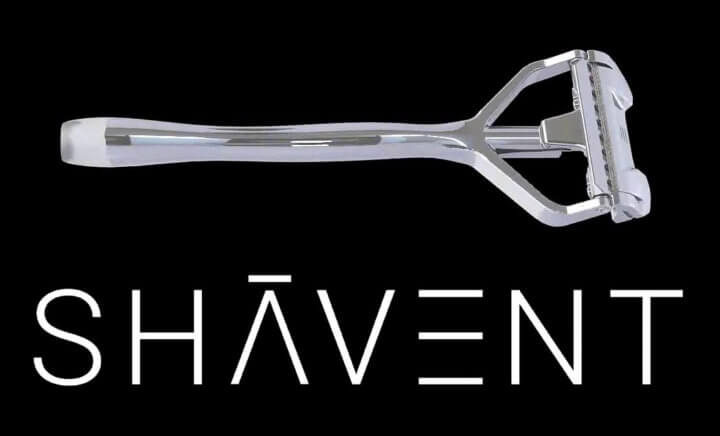
On this bright morning we see a fresh contender in the world of multi-blade cartridge-like razors: the Shavent razor, hailing from scenic, picturesque Germany. I review this fresh face shaver for shaving your fuzzy face below.
Here’s a brief video of the overall theory and practice of how the new Shavent razor works:
Who is this razor for?
(Editor’s Note: Amazon and OneBlade links are affiliate.)
The Shavent falls into a category of what I refer to as “cartridge-like razors” (C.L.R.’s?): The shaver grants us the adaptability of choosing and using your favored brand of double edge blades, yet it operates with the care-free speed and fast simplicity of a cartridge razor.
Other members of the cartridge-like shave family include:
- The Leaf Shaver,
- The Twig (by Leaf Shaves as well,)
- The Broman shaver (apparently sold out)
- The OneBlade,
- The GlobalShave Challenger (in plastic)
- The Focus Dynamic R48 / Focus Dynamic R50
…and perhaps a few others.
These razors are for those who either crave the speed of a cartridge shave or for folks who for various reasons are put off by the notion of jumping directly into double edge safety razor shaving.
I’ve personally come across several individuals – both men and women – who are disturbed by the sight of double edge razor blades or do not have the coordination to consistently operate our beloved safety razors.
The chasm between the environmentally unsound yet convenient and omnipresent cartridge razor and that of the simplicity of the double edge is simply too large of a leap for certain people to make. These shavers fill that gap, some more adequately than others, and progress is made even if people never fully transition to the safety razor shave.
The theme of Shavent is to save the environment, save money vs. cartridges and shave in style. We live in a world overburdened with towering mounds of plastic landfill rubbish, with over 2.2 billion cartridge razors heads and disposable shavers trashed every year in the USA alone, and a further 500,000,000 in Germany where this is manufactured.
This razor – and others in the same cartridge-like family – serve as a bridge away from the all too convenient island of Cartridge World into the bright realm of more sustainable shaving with DE blades. Some might later undertake the full journey to a glorious double edge safety razor, while others will halt at this stopover where you have the cartridge-like experience using common, world-standard razor blades. Some come for the cartridge cost factor, others stay for the notion of zero waste, and yet others arrive due to skin irritation issues with disposables. All are welcome to our happy shaving realm.
What’s in the Box?
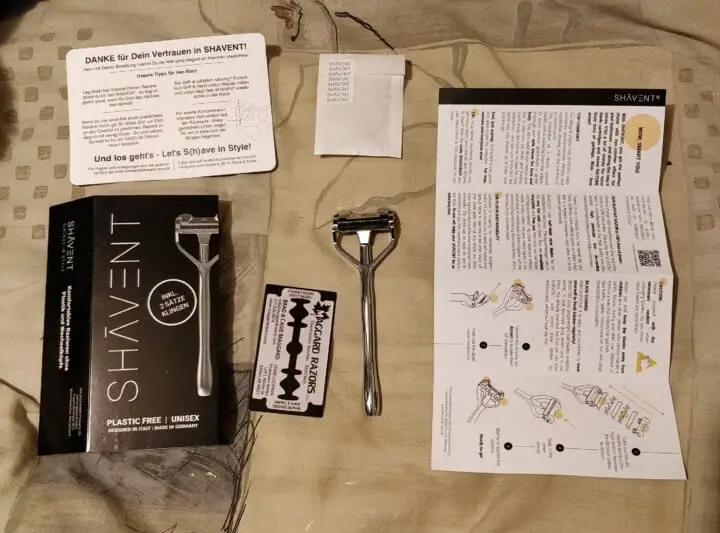
Plate 1: The Shavent arrives with everything you see here. Note the business card for scale.
The Shavent arrives with the following items in the box:
- The razor itself,
- A stand for the razor,
- 3x Derby Extra half blades already mounted in the razor head,
- 3x spare blades in a wax paper envelope,
- A manual & insert card.
Shavent is an environmentally-conscious brand, and true to form, the box, insert card and instructions are all fully recyclable paper and cardboard, with thankfully no plastic to be seen.
Shavent Build, Design, Theory, and Assembly:
The Shavent razor arrives fully assembled with 3 blades already installed, so you are ready to go right out of the box. The included stand keeps the razor upright after use, and the stand consists of an upright peg which goes into a small hole in the bottom of the razor handle. The stand allows some drainage and air drying when your shave concludes, but also aids unloading and loading of fresh blades beforehand.
The Shavent can load up to 3 half-blades with 2 spacers for the “full treatment”, but you could get a milder shave with just 1 or 2 blades. The Shavent offers a logical blade layout which mimics that of the cartridge razor, where the leading blade either trims down and/or pulls the hairs up and forward, allowing the trailing blade(s) to do the finishing cuts.
Unfortunately this shaver arrives with a stylish yet overly-smooth chrome-plated handle, which might make it nearly impossible to grip adequately when wet.
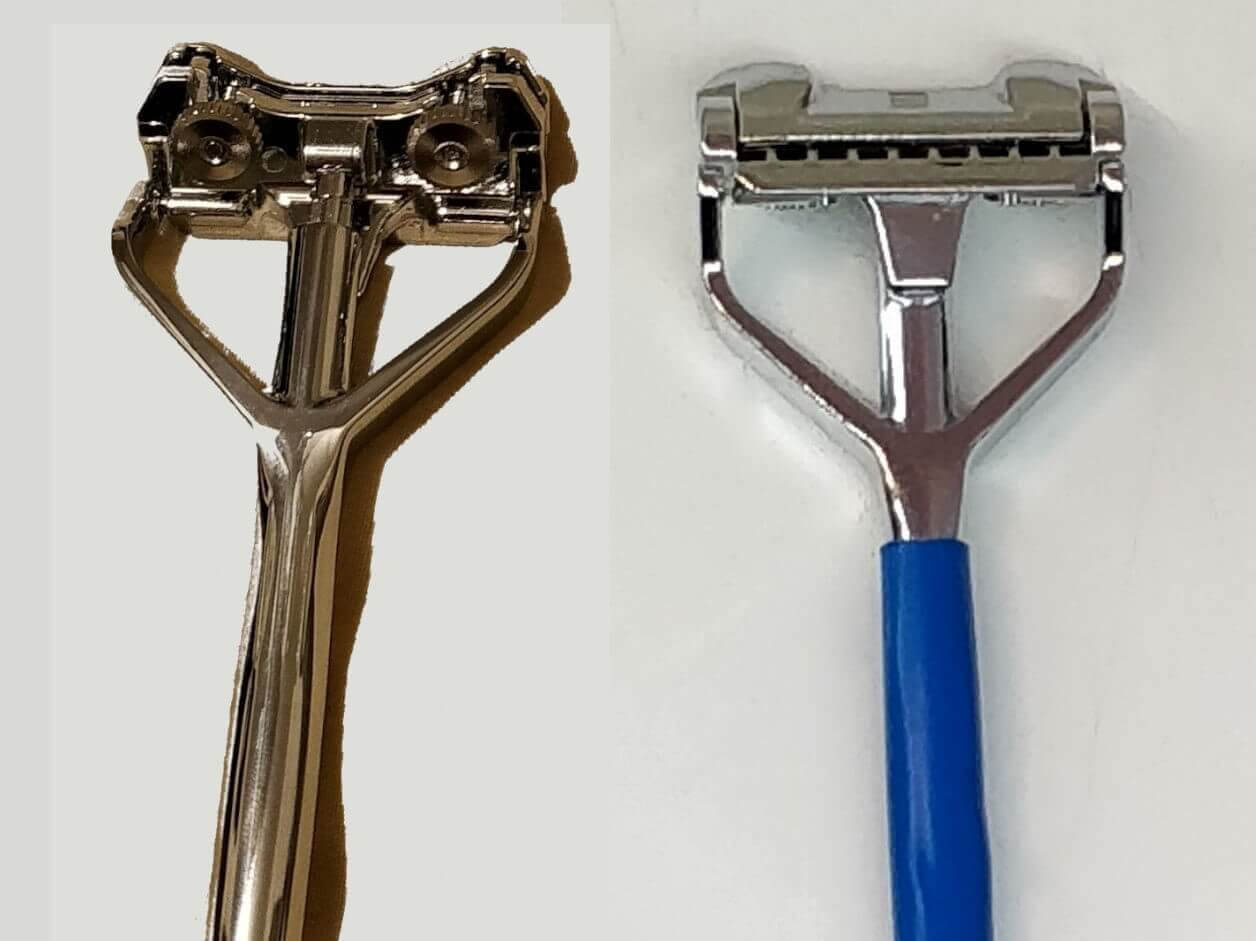
Plate 2: Shavent Razor Handles, Before and After.
Dropping this shaver is ill-advised, so I promptly grabbed my heat gun and some heat shrink tubing to get a better grip on this handle. This now rubberized coating allows for better grip, even when soapy or wet. I suggest you do this or something similar should you acquire a Shavent.
Some overall dimensions are in order: The razor is a little over 6 inches [150mm] long, and the handle is slightly over 4 inches [100mm] from the bottom to the fork-like neck. This intersection of the arms with the handle body is also where the point of balance resides. Weight comes in at 84 grams when fully assembled.
While the long handle will be appreciated by the ladies for their lower-body grooming needs, the straightness of the very same handle makes shaving around the neck region somewhat awkward for men. I’ve bumped the end into my chest a few times during a downstroke in the neck region while still getting acclimated to the razor, so I feel a more traditional offset or bent handle would have been a better choice.
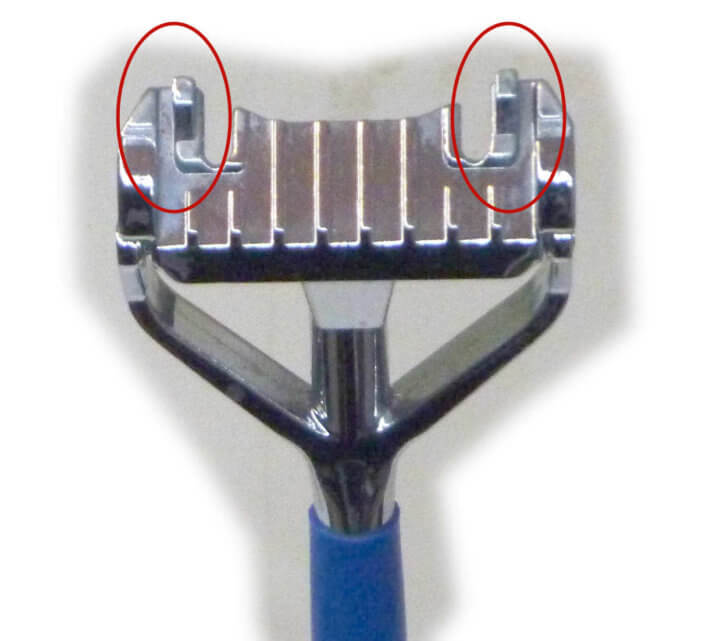
Plate 3: The Shavent Handle and Base Closeup.
The baseplate where the lowest blade resides upon has parallel ridges and generous channels to allow the largest whiskers and the bulk of the lather to smoothly drain out the back. This works well in practice since the lowest blade is doing most of the cutting. The two upward angled ribs towards the back left and right (circled above) are where the inner cutouts of the razor blades register against. The frontal blade tabs register inside two tapered uprights on the forward sides of the base, thus locking the blades securely in place.

Plate 4: Shavent with Blades and Spacers. Note the drain openings.
Included in the pack are two “Double-W” shaped spacers, which stack up between the blades. These spacers will eclipse the inside cutout profiles of the razor blades, and the circled areas above show where the residual lather and smaller whisker bits will drain out. Lather and whiskers will also vent out the sides somewhat, around where the blade tabs are.
You can shave with up to 3 blades by adding or removing spacers and blades. If you’re a real daredevil, you could also experiment with different blade brands of varying sharpness, to further tailor your shave to personal needs.
In practice these spacer openings may clog up while in use, so you must wash with high pressure water from the back of the head or swish the razor head vigorously underwater. Just be careful not to knock the head against anything hard in the process.
Plate 5: Shavent Head Back Side.
When all blades are installed, gently place the cap in position and lightly snug the thumbscrews to secure the cap. Use your thumb to press forward on the cap and blade assembly while doing so. Do not over-tighten the thumbscrews, you may easily strip the threads. Gentle pressure is all that is needed here.
————————————
The Shavent construction has some pluses and minuses which need consideration. On the brighter side, this razor can be disassembled and reassembled for maintenance purposes with a common, small metric Allen wrench. The tensioning spring for the head is a regular compression spring which resides in the hollow central handle, and is retained in place with a set screw. Should the spring fatigue and break, Shavent also offers a separately purchased spare parts kit so you can get back into your shaving groove with a bit of elbow grease and mechanical know-how.
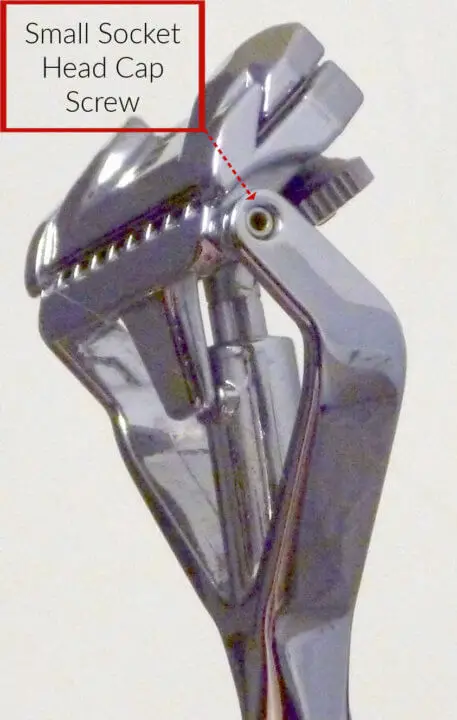
Plate 6: Close Up of the Side of the Razor Head. Note the socket head screw securing the head to the handle.
This approach of reparability speaks of German engineering at its finest, I’d say, and using this comes across as if Mercedes-Benz designed a high-tech shaving razor.
The base, head, cap and thumbscrews are all die cast zinc alloy, which is later chrome plated. Personally, I prefer stainless steel razors – or anodized and heat-treated titanium alloy is also acceptable – but complex castings in stainless or other exotic metals can cost considerably more, so we must take what we can for now. The spacers are apparently stainless sheet steel.
Rolling Your Own?
The Shavent is designed around half [double-edge] blades, AKA, “saloon” type blades which typically go into most shavette razors. Unfortunately there is little selection for half blades on the market: Derby Extra, Derby Premium, Shark Stainless, Parker, Perma-Sharp Super, and perhaps a handful of lesser known varieties.
Is it possible to break your favorite DE blades in half and use those? Indeed you can, but with a caveat or two: The Shavent will “sandwich” all blades and spacers between the top and bottom caps, but if the “legs” on the broken blade are too long, they will ride on top of contact pads on the top of the baseplate and/or the underside of the top cap. This will cause the cap to sit unevenly on the entire assembly and may put undue stress on the rather tiny Ø2.5 mm threaded studs.
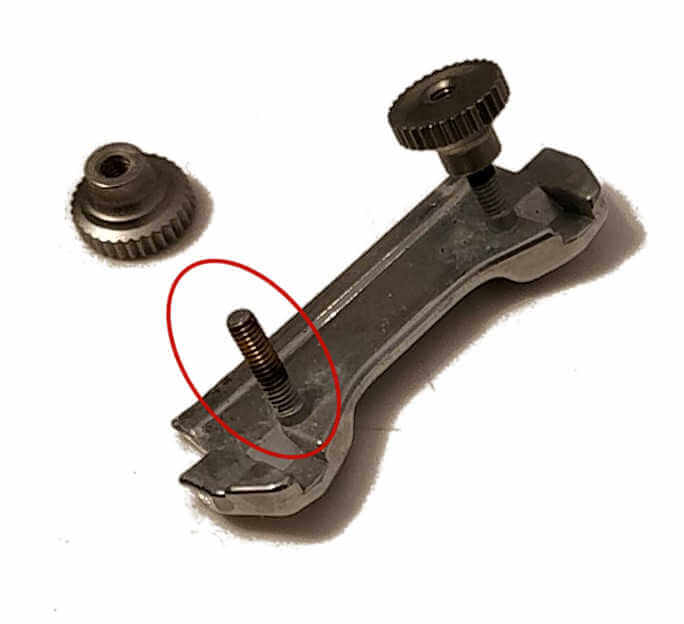
Plate 7: Thread Discoloration
Speaking of the threads, one puzzling aspect of this razor I noticed during my examination is some strange discoloration on the threads of the studs where the thumbscrew fasteners go. I believe this is due to the chrome plating process of the cap plate.
Shavent advises you to keep the threads on the studs at all times so this may not prove to be a problem. Perhaps some light oil in this area might prevent any sort of potential future corrosion issues here.
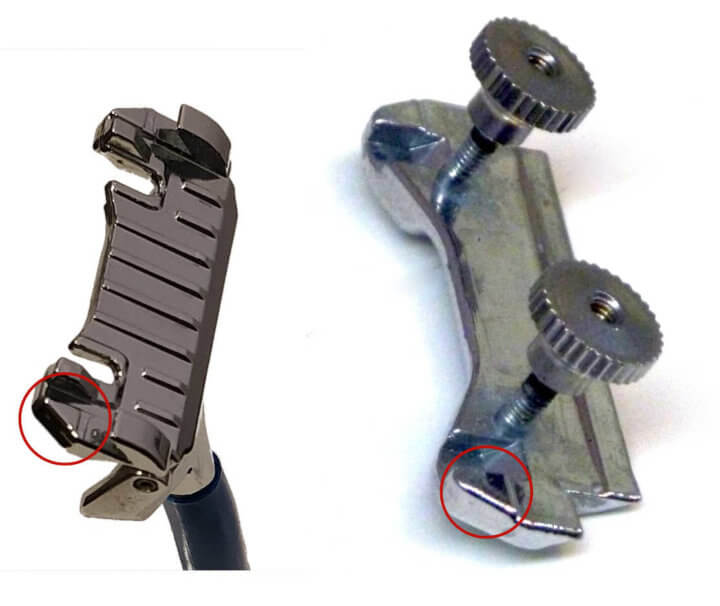
Plate 8: The Shavent Cap and Base. The blades load with the sharp edges facing right in this photo.
Contact pads are circled in the photo above, and are typical on both sides of the cap and head. If these were moved further back, then split double edge blades would work in this razor better, provided the split blades are fully flat before installation.
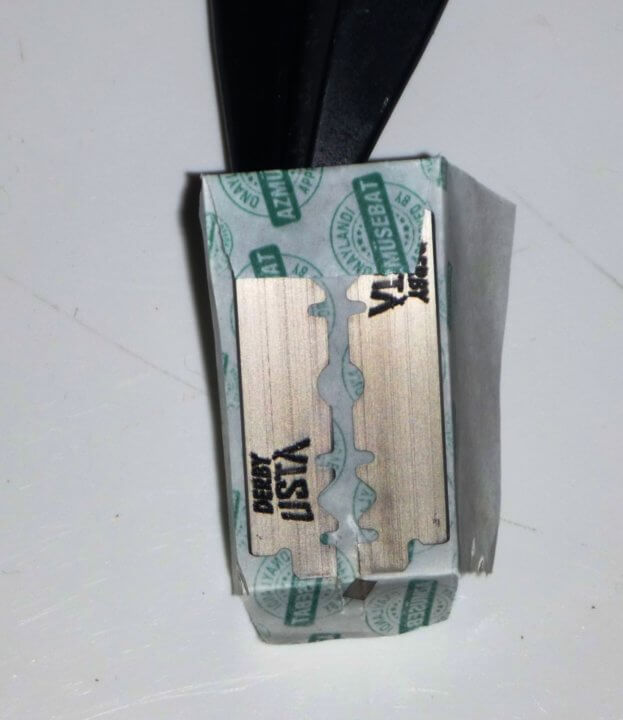
Plate 9: A Split Blade Cut with Tin Snips. Notice the cut-out segment at the bottom of the wax paper wrapper.
One solution around the present limitation is to use a pair of aviation snippers to clip away the small “bridge” section which joins the two blade halves, like you see in the photo above. (Heavy duty nail clippers might also work, but I have not tried that.) For safety, keep the blade in the wax paper wrapper and hold it up to the light to see clearly where you are snipping at.
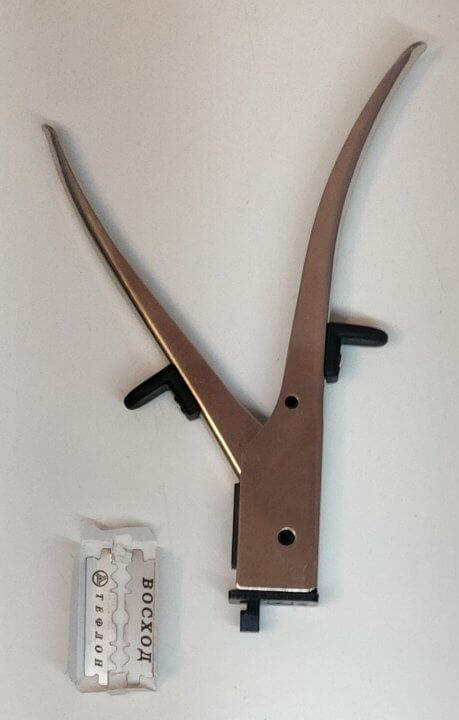
Plate 10: Metal Nibblers. The Easier Way.
Another approach is to acquire a pair of metal nibblers and use those to cut the blades in half. Again, you should keep the blade in the wax paper and hold it up to the light so you can see where the cut will be. Four small nibbles – 2 on either end – and you’re done.
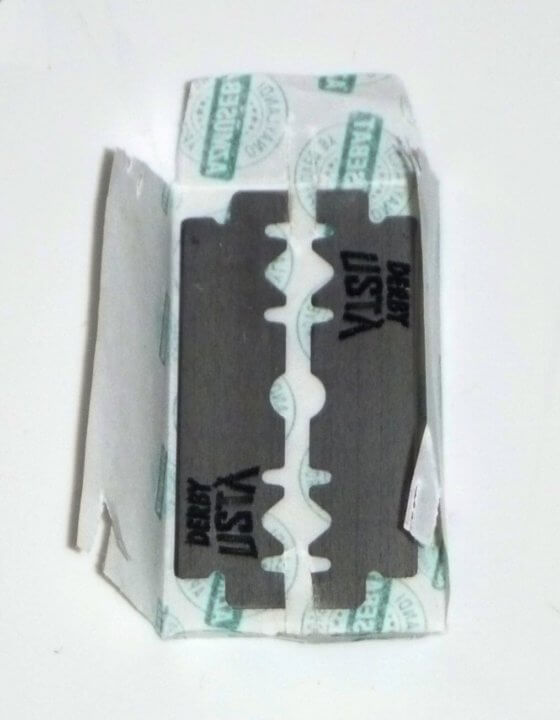
Plate 11: A Fully Split Blade.
Either way the end result ought to look similar to what you see above. Try not to clip into the rest of the profiles in the center of the blade as these help register the blade onto the Shavent base.
If this seems like a lot of “screwing around” to simply get your favorite blade edges ready to go into your razor, that’s because it is. However, this is the initial release of this product and we are aiming to make the most adaptable use of it rather than explicitly using this exactly as the originators may have intended. Some improvisation on our part is required here and there, as with many things in life.
How Well Would a Shavent Shave (if a Shavent Could Save Shaves)?
Introductions aside, how well does the Shavent shave?
Truly it is a small slice of shaving nirvana for me!
There are some razors you might buy where the operation feels so smooth, with such little resistance that you momentarily thought you forgot to load the blades and it feels like nothing is happening… but miraculously after a pass or two your skin is as silky as the moment you were born. The Shavent is just such a razor, assuming the rest of your shave lather is up to snuff, your blade edges are sharp, and your skin is properly hydrated.
The Shavent is both smooth and forgiving, and you may go rapidly with it in the “shave autopilot mode” you slip into when wielding a cartridge. A multi-day’s growth of tough whiskers falls away effortlessly like bowling pins knocked aside by a precisely-aimed spare, yet your skin is spared the indignity of scraping and irritation some complain about with frequent passes and cleanup during some double edge shaves.
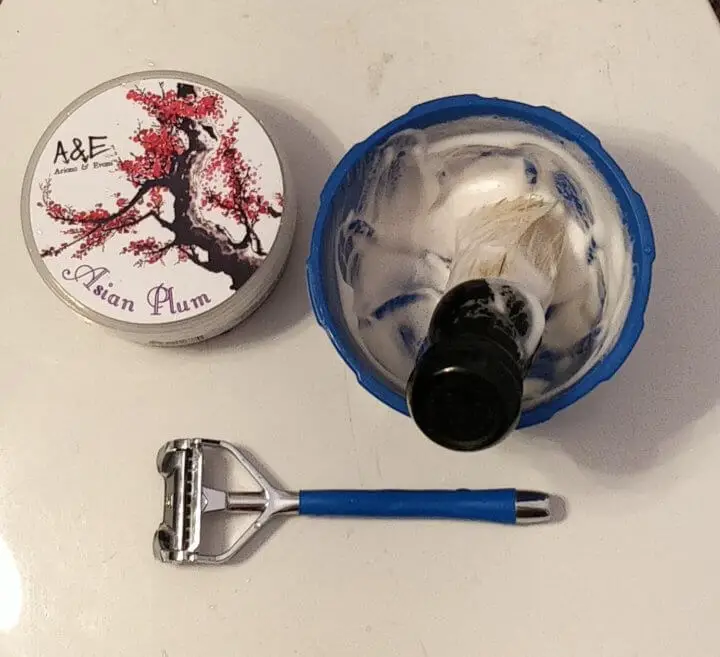
Plate 12: The setup for the first Shavent shave.
Personally I don’t care for the Derby blades which came with the razor, so I replaced them with more consistent Voskhod blades and my shave experimentation began. The results from using just 2 of my favorite blades were positively sublime.
A later head shave with 3 fresh Voskhod blades initially proved slightly problematic on account of trying to “find” the proper angle, but once discovered the rest was smooth sailing. I purposely let my head hair grow to 3 or so millimeters and then proceeded with a shave to see how well this razor handled tough undergrowth. The results were surprisingly good: the skin felt nice and cushy-soft when the action wrapped up and there was blessedly no irritation. There was a bit of clogging with the middle and upper spacers, but nothing major which was not resolved with frequent washing.
Like with a genuine cartridge razor, if you find yourself venturing into Shavent territory, you are well advised to use shave soap or cream with good residual slickness to cut down on any potential irritation from multiple blades passing over the same area. A pre-shave oil may also be in order, if you have sensitive skin.
Lastly, since the Shavent is mild to moderate in feel, you could use sharper blades to get better, smoother and faster results. Please consult my earlier article on The Science of Blade Sharpness and perhaps select a razor brand from the charts with slightly better average sharpness than you might typically use comfortably.
This ultimate flexibility of blade choice makes the Shavent your shaving savior in this regard.
The Price is… Right?
Curiously, the Shavent is not available for purchase in North America right now, for unknown reasons. Acquiring this razor proved to be a real challenge, and I was forced to use a re-shipping service in Germany to get one in hand. After some minor delays I was duly rewarded for my persistence.
Looking at the economics of the Shavent, you can’t help but notice the high price.
The initial cost of the base razor package is €99, plus some shipping and taxes, and with the optional spare parts kit, it all totaled out to €103.95 [~$125.12] total.
The reshipping service added another €45.22 to the price, so our grand total to get this razor across the world and delivered to my front door amounted to €149.17, or about $181.05 at the time of purchase. This firmly cements the Shavent in the premium razor category, out of reach or desirability of all but the most dedicated and/or environmentally conscious wet shavers.
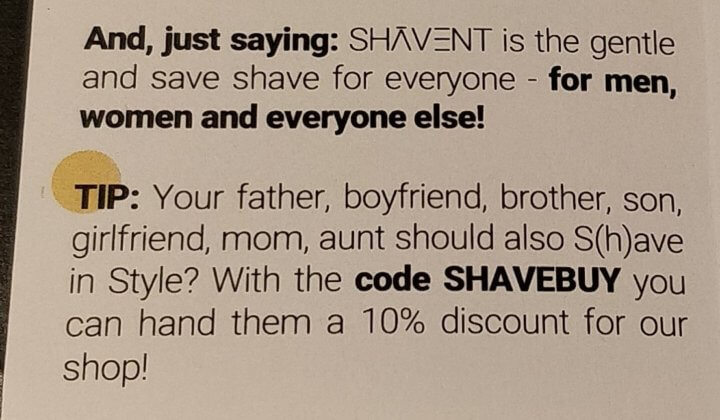
Plate 13: The discount code from the instruction manual.
It is possible to get a 10% discount at the online shop by using the discount code above at checkout, so this alleviates some of the pain your wallet will feel.
And hopefully by the time you read this, this superb shave instrument will be available outside of Europe for your ready consideration.
My Final Tally:
Pros:
- Very comfortable shave, smooth, close and efficient but forgiving with very little or no irritation. A real boon to those with sensitive skin but tough whiskers!
- Long handle, which makes shaving easier for the ladies.
- Scalloped, pivoting head can get close in tight areas around the ears or under the nose.
- Razor can be disassembled and some parts can be replaced if lost or damaged.
- Variable options: 1, 2, or 3 blades in various positions depending on how gentle or aggressive you want to dial in your shave.
- Versatility: you can choose your favorite blade brand to meet your needs.
Cons:
- Slippery handle.
- Shaver is die-cast zinc and not stainless steel.
- High cost.
- Many individual parts which might get dropped or lost.
- Assembly may challenge those with hand tremors or inherent clumsiness.
- Like most razors it is a delicate instrument, so don’t drop it.
- Threaded studs in the cap are very tiny and may be prone to damage if mishandled.
- Not presently available outside of Europe or the United Kingdom.
The Final Cut:
For those that demand the speed, comfort and expediency of a cartridge razor, mixed with the flexibility and sustainability of the double edge blades, your ship has finally arrived. The Shavent is a versatile, top-performing hybrid razor marred only by a few design quirks and material choices.
7/10 rating.
Main Webpage: https://shavent.com/
FaceBook: https://www.facebook.com/shavent-de
Instagram: https://www.instagram.com/shavent_de/
Note 1: I may do another article in the future comparing this razor with the Leaf shaver. I have not done this yet because I do not presently own a Leaf razor, and those who do own Leaf shavers are loathe to lend them out even temporarily for review purposes.
Note 2: As indicated above, I had purchased this razor with my own funds, and entirely of my own accord. I was not gifted with a Shavent razor for this review, and a prior email to Shavent went unanswered at the time of purchase. My opinions, conclusions and thoughts are entirely my own and I was not rewarded or bribed with ponderous suitcases filled with stacks of small unmarked bills placed in a dead drop for my later retrieval. Really!

any idea for availability of those metal nibblers in Europe (GER, home of the Shavent)?
I have the Shavent and the Leaf razor. For me the Leaf is a bit milder but the Shavent could be repaired what is a plus. The shaving result is on my skin identical on both razors. I am interested for your comparison Mark.
looks too mechanical. Thumb screws & springs and you’re able to rebuild it !? I own
a Leaf, it too looks bulky. I wished my Leaf
did not pivot. Of all of my de razors I own,
even high end ones [over $100.00 each] my
King Gillette [@$30 ] & the Bevel [@ $49] and their blades are daily drivers.
Thanks for the thorough review. If not for you, then let-it-go…
That is way to much for zinc razor, plus nibber, plus spare parts kit!! My razorock steel razor, no parts to loose, zinc to corrode, half the price.
Sorry, not for me.
I’ve never seen such a high maintenance razor. TBH my car requires less diddling. One of the main reasons I like cartridges is that I don’t have to do anything but slap that cartridge onto the handle and I’m done. Are you asking me to buy tools to cut the blades in half and oil for the threads? All this for a mere $125? I’m suspicious of companies that want to “save” the environment by making things easy for them and hard for you. I appreciate your review and the integrity you show in being objective but I wouldn’t take this contraption for $125 although I might take it for $175.
Comments are closed.